Dmitrii Medvedev
Learning to generalize Dispatching rules on the Job Shop Scheduling
Jun 09, 2022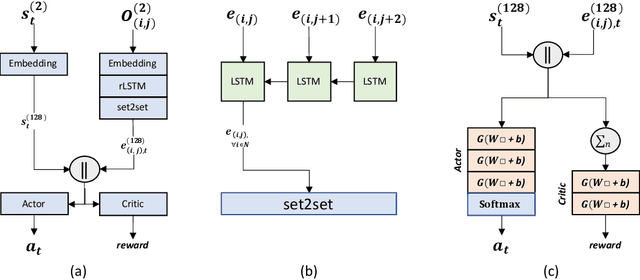
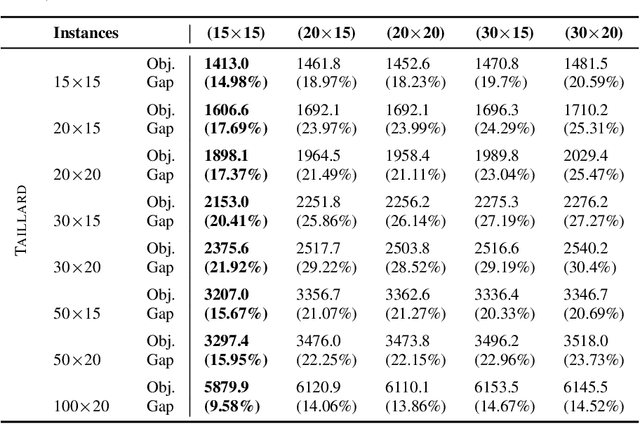
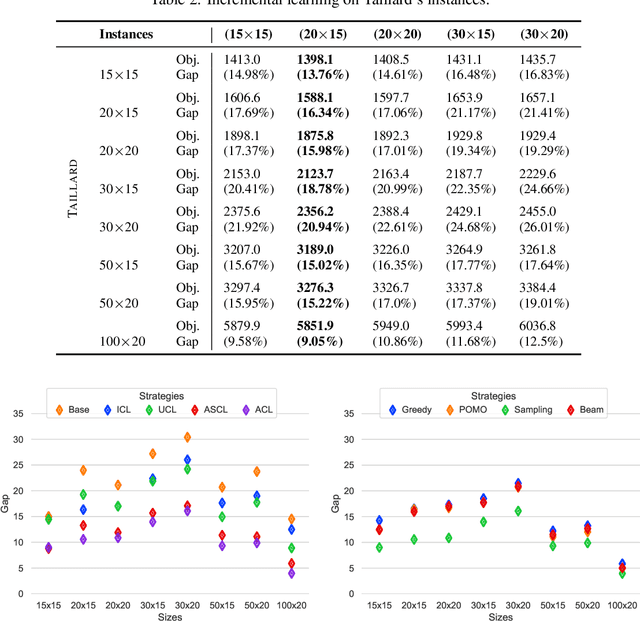
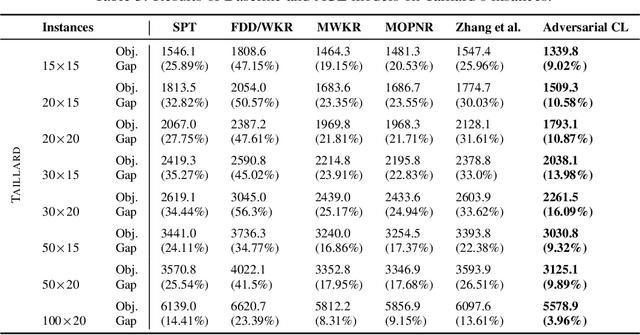
Abstract:This paper introduces a Reinforcement Learning approach to better generalize heuristic dispatching rules on the Job-shop Scheduling Problem (JSP). Current models on the JSP do not focus on generalization, although, as we show in this work, this is key to learning better heuristics on the problem. A well-known technique to improve generalization is to learn on increasingly complex instances using Curriculum Learning (CL). However, as many works in the literature indicate, this technique might suffer from catastrophic forgetting when transferring the learned skills between different problem sizes. To address this issue, we introduce a novel Adversarial Curriculum Learning (ACL) strategy, which dynamically adjusts the difficulty level during the learning process to revisit the worst-performing instances. This work also presents a deep learning model to solve the JSP, which is equivariant w.r.t. the job definition and size-agnostic. Conducted experiments on Taillard's and Demirkol's instances show that the presented approach significantly improves the current state-of-the-art models on the JSP. It reduces the average optimality gap from 19.35\% to 10.46\% on Taillard's instances and from 38.43\% to 18.85\% on Demirkol's instances. Our implementation is available online.
AI for Porosity and Permeability Prediction from Geologic Core X-Ray Micro-Tomography
May 26, 2022
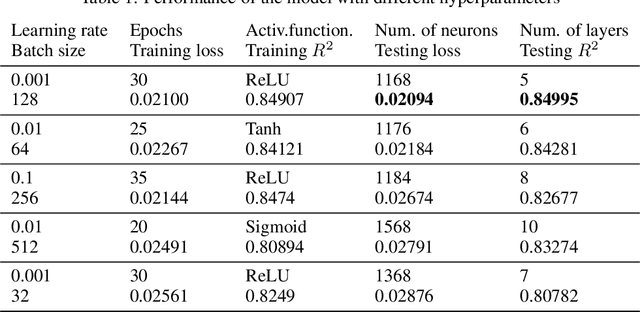
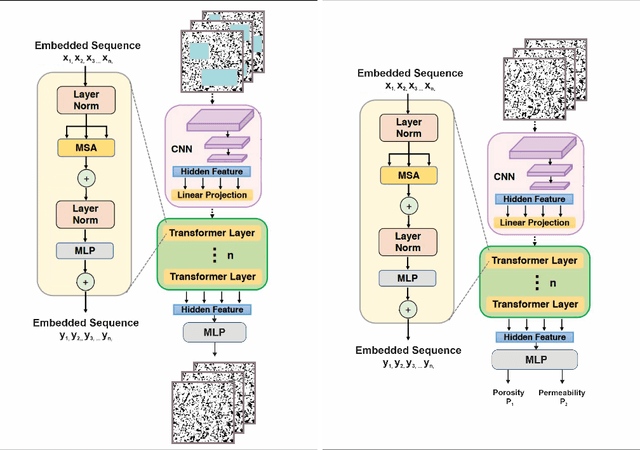

Abstract:Geologic cores are rock samples that are extracted from deep under the ground during the well drilling process. They are used for petroleum reservoirs' performance characterization. Traditionally, physical studies of cores are carried out by the means of manual time-consuming experiments. With the development of deep learning, scientists actively started working on developing machine-learning-based approaches to identify physical properties without any manual experiments. Several previous works used machine learning to determine the porosity and permeability of the rocks, but either method was inaccurate or computationally expensive. We are proposing to use self-supervised pretraining of the very small CNN-transformer-based model to predict the physical properties of the rocks with high accuracy in a time-efficient manner. We show that this technique prevents overfitting even for extremely small datasets.
RADNet: Ensemble Model for Robust Glaucoma Classification in Color Fundus Images
May 25, 2022
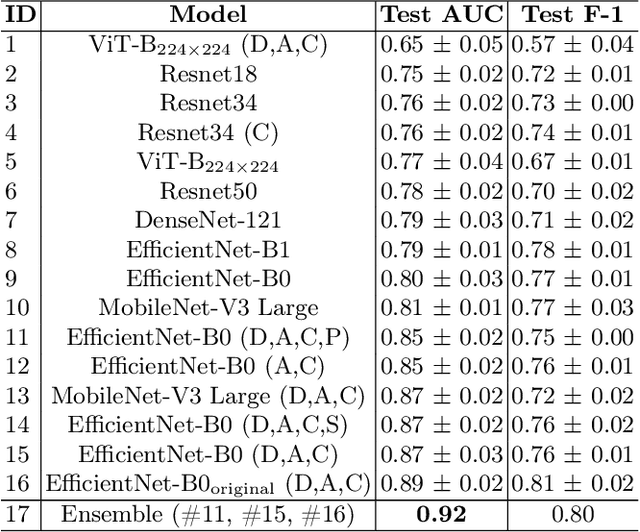
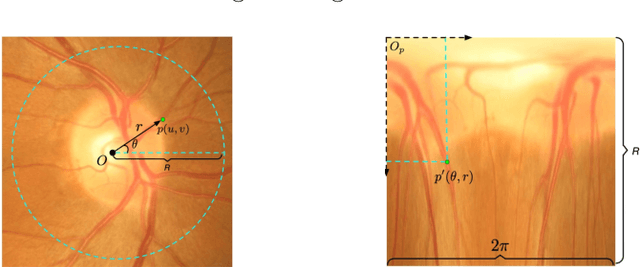
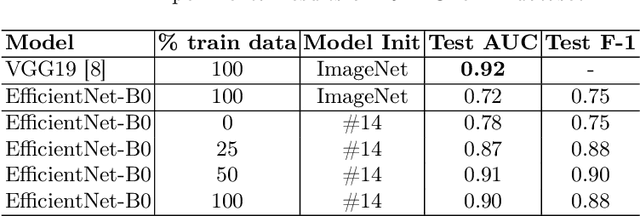
Abstract:Glaucoma is one of the most severe eye diseases, characterized by rapid progression and leading to irreversible blindness. It is often the case that pathology diagnostics is carried out when the one's sight has already significantly degraded due to the lack of noticeable symptoms at early stage of the disease. Regular glaucoma screenings of the population shall improve early-stage detection, however the desirable frequency of etymological checkups is often not feasible due to excessive load imposed by manual diagnostics on limited number of specialists. Considering the basic methodology to detect glaucoma is to analyze fundus images for the \textit{optic-disc-to-optic-cup ratio}, Machine Learning domain can offer sophisticated tooling for image processing and classification. In our work, we propose an advanced image pre-processing technique combined with an ensemble of deep classification networks. Our \textit{Retinal Auto Detection (RADNet)} model has been successfully tested on Rotterdam EyePACS AIROGS train dataset with AUC of 0.92, and then additionally finetuned and tested on a fraction of RIM-ONE DL dataset with AUC of 0.91.
Robust Reinforcement Learning on Graphs for Logistics optimization
May 25, 2022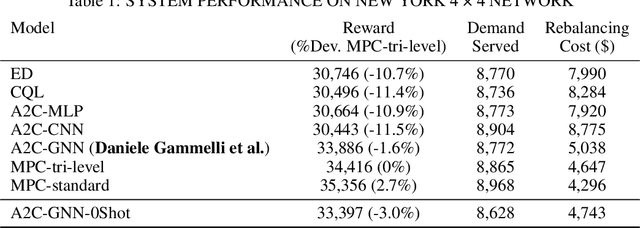
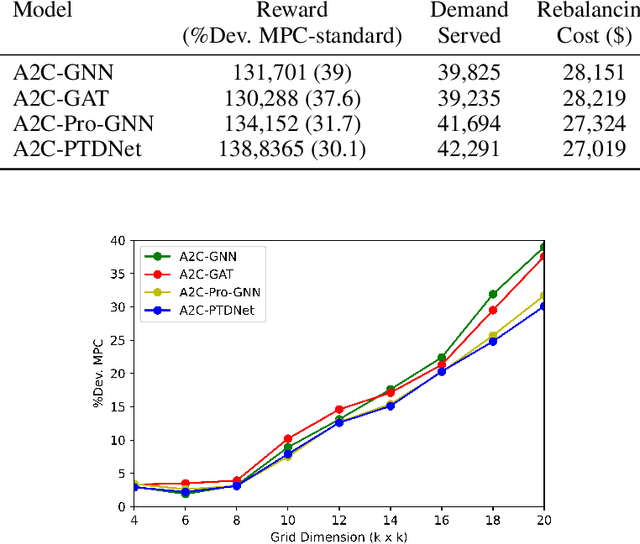

Abstract:Logistics optimization nowadays is becoming one of the hottest areas in the AI community. In the past year, significant advancements in the domain were achieved by representing the problem in a form of graph. Another promising area of research was to apply reinforcement learning algorithms to the above task. In our work, we made advantage of using both approaches and apply reinforcement learning on a graph. To do that, we have analyzed the most recent results in both fields and selected SOTA algorithms both from graph neural networks and reinforcement learning. Then, we combined selected models on the problem of AMOD systems optimization for the transportation network of New York city. Our team compared three algorithms - GAT, Pro-CNN and PTDNet - to bring to the fore the important nodes on a graph representation. Finally, we achieved SOTA results on AMOD systems optimization problem employing PTDNet with GNN and training them in reinforcement fashion. Keywords: Graph Neural Network (GNN), Logistics optimization, Reinforcement Learning
 Add to Chrome
Add to Chrome Add to Firefox
Add to Firefox Add to Edge
Add to Edge